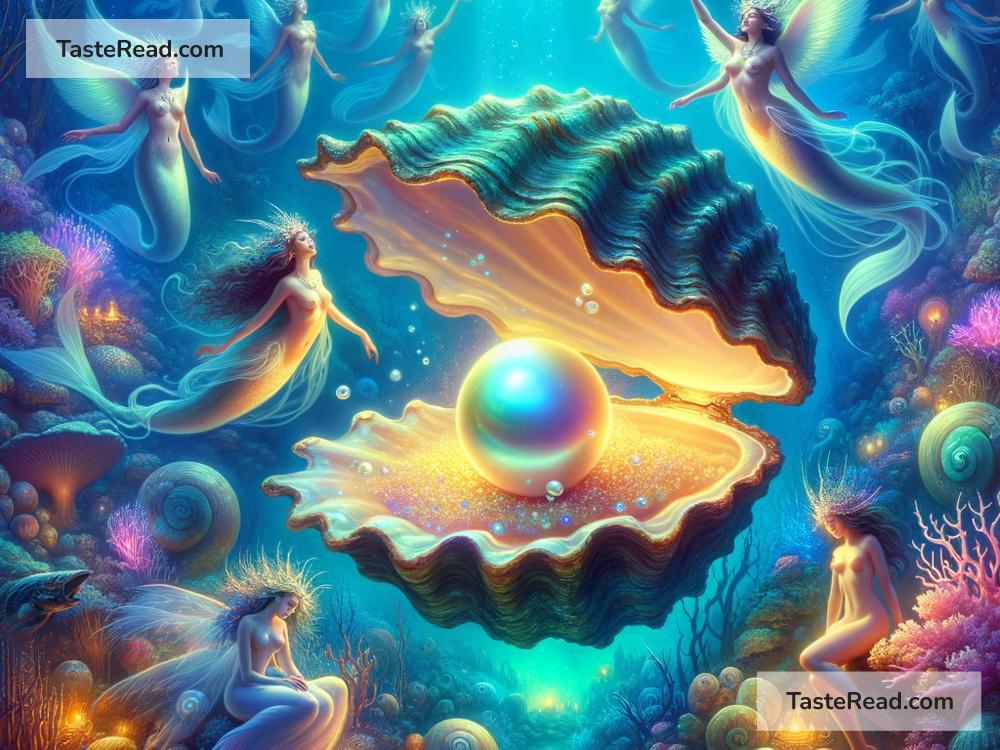The Myths Behind Oysters and Pearls: A Magical Journey
Oysters and pearls are often seen as symbols of beauty, elegance, and luxury. But beyond their physical charm, these treasures of the ocean have fascinating stories tied to their origins in mythology. Human imagination, sparked by the mysteries of nature, has long sought to explain how pearls are formed and why oysters hold them so tightly within their shells. These ancient tales, passed on for generations, turn oysters and pearls into more than just natural wonders—they become magical gifts from the divine or elements of epic stories.
Let’s dive into some of these mythical origins and explore how different cultures view the creation of pearls and the mystical nature of oysters.
Pearls: Gifts From the Moon and Ocean Spirits
Many cultures have linked pearls to celestial or divine forces. In ancient mythology, pearls were thought to be the tears of gods or goddesses. Their shimmering, glowing appearance reminded people of moonlight or stars hidden within their smooth shells, leading to stories that connected pearls to the heavens above.
Ancient Indian Mythology
In Indian mythology, pearls were often considered divine. One legend explains that pearls were created by the moon. When the moon shines at night, its soft light falls on the ocean and mixes with the dew from lotus flowers. This magical combination eventually becomes pearls inside oysters. In these stories, pearls symbolize purity and peace, reflecting the calming effect of moonlight on the world.
Another Indian legend tells of pearls being born during a great cosmic battle. When the gods and demons churned the ocean to create “amrit,” the nectar of immortality, pearls emerged as one of the sacred objects formed during this event.
Greek and Roman Myths
In ancient Greece, pearls were linked to the goddess Aphrodite, the goddess of love, beauty, and the sea. According to legend, she emerged from the ocean riding a shell, and pearls became her favored adornments. Romans expanded on this idea, believing pearls were Aphrodite’s tears of joy that had fallen into the ocean. They viewed pearls as symbols of love and happiness, gifts from the goddess to humankind.
Oysters: Guardians of Hidden Treasures
While pearls often take center stage in myths, oysters themselves are also fascinating creatures. Every pearl begins as a tiny irritant inside an oyster’s shell. Over time, the oyster wraps this irritant in layers of nacre, transforming it into the precious gem we admire today. This protective act has inspired myths about oysters as guardians of treasures or beings connected to wisdom.
Chinese Legends
In ancient China, oysters were believed to have magical powers. One legend says that oysters could absorb the essence of the moon. When the moon was full, its energy would be stored inside oysters, eventually creating pearls. Because of this connection, pearls were often seen as balancing forces that brought harmony to those who wore them.
Another Chinese myth describes pearls as jewels guarded by powerful dragons. The dragons, who lived beneath the sea, protected the pearls within oysters to keep them safe from greedy humans. These stories taught people to respect nature and its hidden treasures.
Persian Folklore
Persian myths also tied pearls to the skies and seas. According to their ancient stories, pearls were formed when oysters swam to the surface of the ocean during a thunderstorm. Raindrops from the heavens and flashes of lightning struck the oysters, giving birth to pearls. Because pearls were created in such dramatic and magical moments, they were considered symbols of strength and purity in Persian culture.
Universal Themes: Beauty, Mystery, and Transformation
Across cultures, oysters and pearls represent beauty, mystery, and transformation. The pearl itself starts as something small and bothersome, but through the oyster’s care, it turns into a priceless gem. This natural process inspired myths that teach lessons about patience, growth, and finding beauty in unexpected places.
Many of these myths also emphasize the connection between the earth, sea, and sky. Pearls are often seen as bridges between these realms—gifts that unite the heavens, the depths of the ocean, and human life. Cultures around the world view pearls as rare and precious, just like the relationships between nature’s elements.
Modern Appreciation for Oysters and Pearls
Even though science has now shown us the true process of pearl formation, the myths surrounding oysters and pearls continue to inspire us. They remind us of the creativity and wonder in how humans interpret the natural world. Instead of seeing oysters and pearls as simple objects, these stories add a layer of magic that enriches their beauty.
The mythical origins of oysters and pearls remind us to look deeper into the world around us. Whether you’re admiring a pearl necklace or picturing oysters hidden beneath ocean waves, you’re also connecting with centuries of storytelling—stories that teach us about the beauty of transformation and the mysterious gifts of nature.
So the next time you see an oyster or gaze at a pearl, let your imagination take you back to those ancient myths. Think of the moonlight falling on the ocean, the tears of a goddess, or the fierce protection of dragons. Perhaps pearls aren’t just treasures of the sea—they’re pieces of magic from another world.


